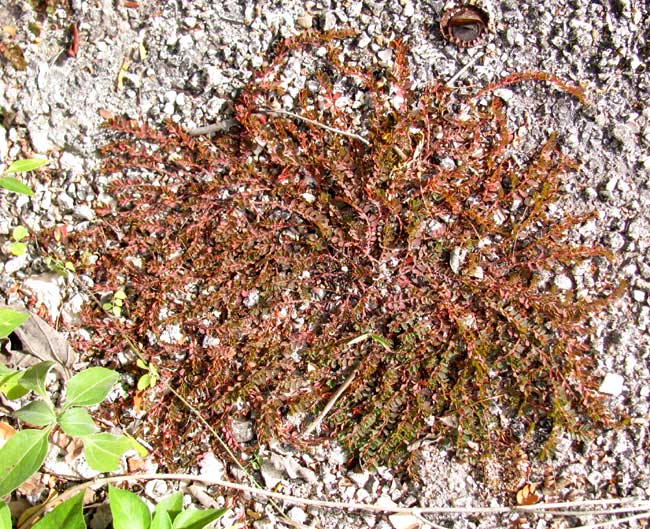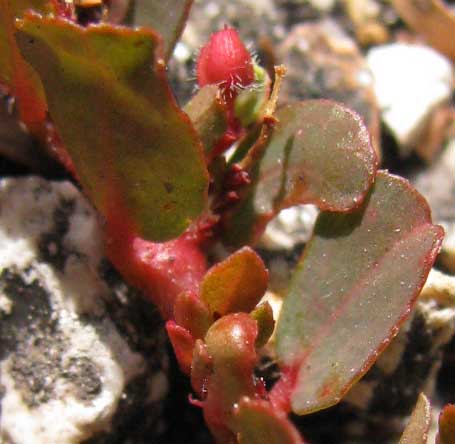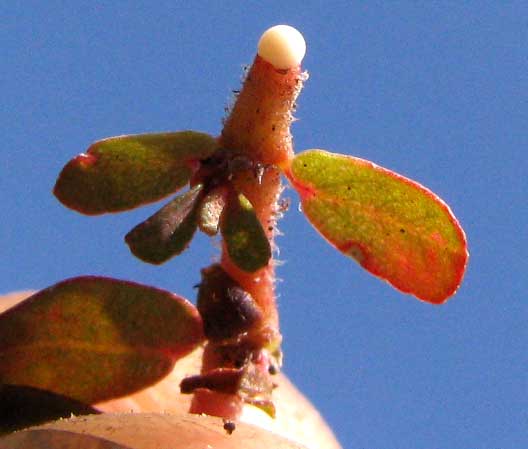Excerpts from Jim Conrad's
Naturalist Newsletter

from the January 16, 2011 Newsletter issued from Hacienda Chichen Resort beside Chichén Itzá Ruins, central Yucatán, MÉXICO; limestone bedrock,elevation ~39m (~128ft), ~N20.676°, ~W88.569°
LIVING WITH LOTS OF SUNSHINE

I needed to see that fruiting capsule, which is only about 1/20th inch high (1.4mm) because those stiff, white hairs arising from the fruit's three corners distinguish the species from similar relatives.
Pictures of Euphorbias are plentiful on the Internet but I find none as reddish as ours. The redness results from long hours of intense sunlight. Often you see plants that normally are green acquire a reddish color when overexposed to sunlight, for red pigment absorbs sunlight energy that might otherwise damage the plant's relatively fragile green chlorophyll.
Also our plant's pairs of leaves occur along the stems much closer together than normal. This is another adaptation to intense sunlight, the closer-together leaves tending to shade one another.
Up North members of the genus Euphorbia often are referred to as spurges, and a field mark helping us recognize them is that they issue a milky, acrid juice from wounded parts. You can see a freshly broken stem below:
